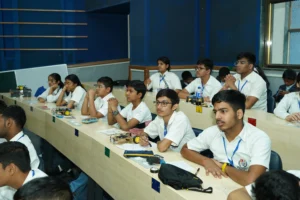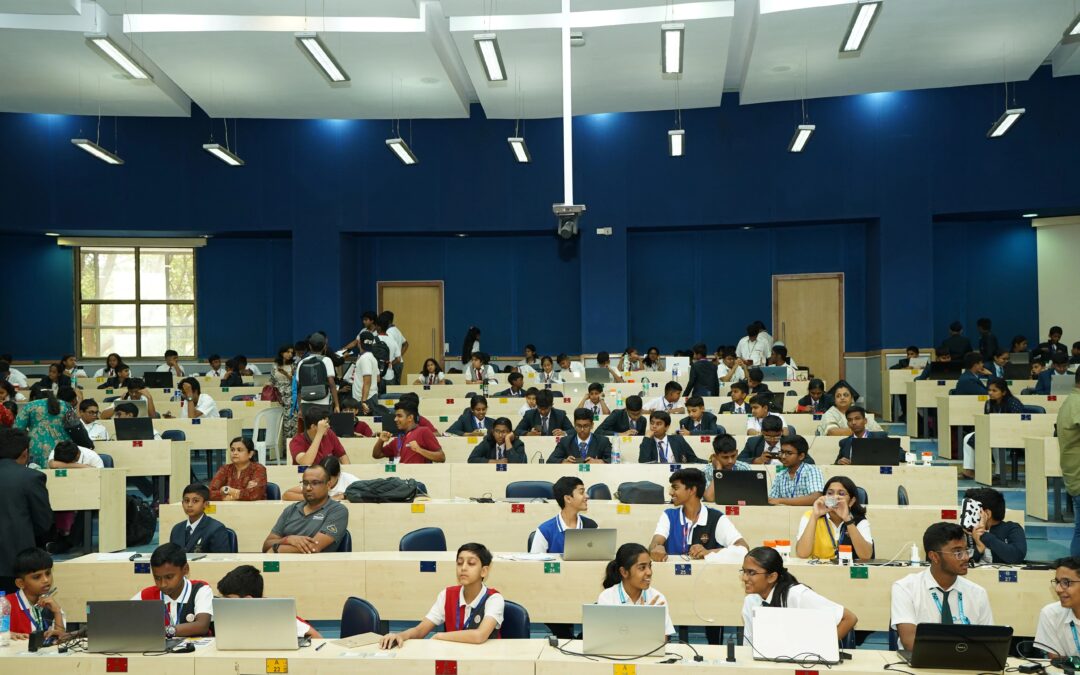We know that the world is evolving rapidly. In such a scenario, critical thinking, creativity, and problem-solving are no longer optional skills—they are essential. A Design and Thinking Lab Setup in Schools serves as a hub for fostering innovation and nurturing these abilities among students. Setting up such a lab in Indian schools is a visionary step towards preparing students for the challenges of the 21st century. Here’s a comprehensive guide to help you create a thriving Design and Thinking Lab in your school in Delhi or anywhere in India.
Step 1: Understand the Concept of a Design and Thinking Lab
Before diving into the setup, it’s crucial to understand what a Design and Thinking Lab entails. These labs are spaces where students engage in activities that promote design thinking—a methodology for solving complex problems through empathy, ideation, prototyping, and testing. It integrates creativity with analytical thinking and focuses on hands-on learning. Combining these with Composite Skill Labs can further enhance the learning experience by providing a holistic approach to skill development.
Key objectives of the lab include:
- Encouraging innovative problem-solving.
- Building teamwork and collaboration skills.
- Applying theoretical knowledge to practical scenarios.
- Nurturing curiosity and creativity.
Step 2: Define the Vision and Goals
Start by identifying the purpose of your Design and Thinking Lab. Ask yourself:
- What skills do you want students to develop?
- How will this lab integrate into the existing curriculum?
- What outcomes do you expect over time?
For example, the vision might be to create future-ready students who can think critically and innovate in any field they choose. Set specific, measurable goals such as organizing regular design challenges or integrating the lab into STEM and humanities projects.
Step 3: Secure Administrative and Financial Support
Setting up a lab requires investment in infrastructure, equipment, and training. Present your idea to school administrators and stakeholders, emphasizing the long-term benefits for students and the school. Use data and case studies to illustrate the impact of similar labs globally.
To fund the lab, consider:
- Allocating part of the school’s annual budget.
- Collaborating with educational NGOs and government schemes.
- Partnering with local businesses or technology companies for sponsorship.
Step 4: Choose the Right Space
The lab should be a dedicated, flexible space that inspires creativity and collaboration. Look for a room that is:
- Spacious enough to accommodate workstations, prototyping areas, and collaborative zones.
- Well-lit, ventilated, and conducive to a variety of activities.
- Equipped with electrical outlets and internet connectivity.
- Design the space with modular furniture to ensure adaptability for different projects and group sizes.

Thinking Lab Setup in Schools
Step 5: Procure Essential Tools and Equipment
A well-equipped lab is central to its success. Depending on your school’s budget and focus, consider including the following:
- Digital Tools:
- Computers with design software (e.g., Adobe Suite, AutoCAD).
- 3D printers and scanners.
- Virtual reality (VR) kits for immersive design experiences.
- Physical Tools:
- Crafting supplies (cardboard, glue guns, markers).
- Prototyping materials like foam boards, fabric, and clay.
- Hand tools such as screwdrivers, pliers, and cutters.
- Electronics and Robotics:
- Arduino kits, Raspberry Pi boards.
- Sensors, motors, and microcontrollers.
- Circuit boards and soldering equipment.
- Reference Materials:
- Books on design thinking and innovation.
- Online learning resources and video tutorials.
Step 6: Develop a Curriculum and Framework
A structured curriculum ensures that the lab is utilized effectively. Work with educators to design programs tailored to various age groups. The curriculum should:
- Introduce students to the design thinking process (Empathize, Define, Ideate, Prototype, Test).
- Include hands-on projects such as designing sustainable products or solving local community problems.
- Integrate with existing subjects like science, math, and social studies.
For instance, younger students can work on creative art projects, while older students can tackle real-world challenges like designing assistive devices for the elderly.
Step 7: Train the Educators
Teachers play a pivotal role in guiding students through design thinking. Organize workshops and training sessions to help them understand the methodology and tools. Partner with organizations that specialize in design thinking education for professional development programs. A well-planned Thinking Lab Setup in Schools can further support these efforts, creating an environment conducive to creativity and innovation.
Key areas of teacher training should include:
- Facilitation techniques to encourage creativity and collaboration.
- Familiarity with lab tools and software.
- Assessment methods for project-based learning.
Step 8: Encourage a Culture of Innovation
To make the lab a success, it’s essential to foster a mindset of curiosity and experimentation among students. Encourage them to:
- Ask questions and explore multiple solutions.
- Embrace failure as part of the learning process.
- Collaborate and share ideas openly.
Celebrate student achievements through events like innovation fairs, competitions, and exhibitions. This not only motivates students but also showcases the lab’s impact to parents and stakeholders.
Step 9: Collaborate with External Experts
Bring in professionals from various industries to inspire and mentor students. This could include:
- Designers and architects.
- Engineers and technologists.
- Entrepreneurs and innovators.
Organize guest lectures, webinars, and workshops to expose students to real-world applications of design thinking.
Step 10: Monitor Progress and Iterate
Once the lab is operational, regularly assess its effectiveness. Use metrics such as:
- Student participation rates.
- Quality of projects and prototypes.
- Feedback from students, teachers, and parents.
Based on these insights, make improvements to the curriculum, tools, and teaching methods. A thriving lab evolves continually to meet the needs of its users.
Step 11: Leverage Technology and Partnerships
Technology can amplify the impact of your lab. Use platforms like Tinkercad, Figma, or Google Workspace for collaboration and design. Additionally, collaborate with ed-tech companies and organizations offering design thinking modules tailored for schools. A well-designed Thinking Lab Setup in Schools can enhance these initiatives, providing access to advanced tools, funding, and mentorship opportunities by partnering with industry leaders.
Step 12: Promote the Lab’s Achievements
Share the success stories of your lab through social media, newsletters, and school events. Highlighting student projects and innovations can attract attention from parents, potential sponsors, and educational bodies. A well-executed Thinking Lab Setup in Schools can be a centerpiece for these efforts. Create a digital portfolio of projects, showcasing how students are applying design thinking to solve problems creatively. Integrating AI with robotics can further elevate the lab’s impact and innovation potential.
Conclusion
Setting up a Design and Thinking Lab in Indian schools is not just an investment in infrastructure—it’s an investment in the future of education. Such labs, combined with a robust Thinking Lab Setup in Schools, empower students to think critically, innovate fearlessly, and collaborate effectively, equipping them with skills that will serve them for a lifetime
By following this step-by-step guide, schools can create a dynamic space where ideas come to life, nurturing a generation of thinkers and doers ready to make a difference in the world. The journey may be challenging, but the rewards are transformative—for students, educators, and society at large. Integrating an Internet of Things Course into this setup can further enhance learning opportunities and innovation.
Empower your students today by taking the first step towards establishing a Design and Thinking Lab in your school. The future awaits!
Contact Techradiance to set up a ‘thinking and design’ lab in your school in Delhi or anywhere in India!

